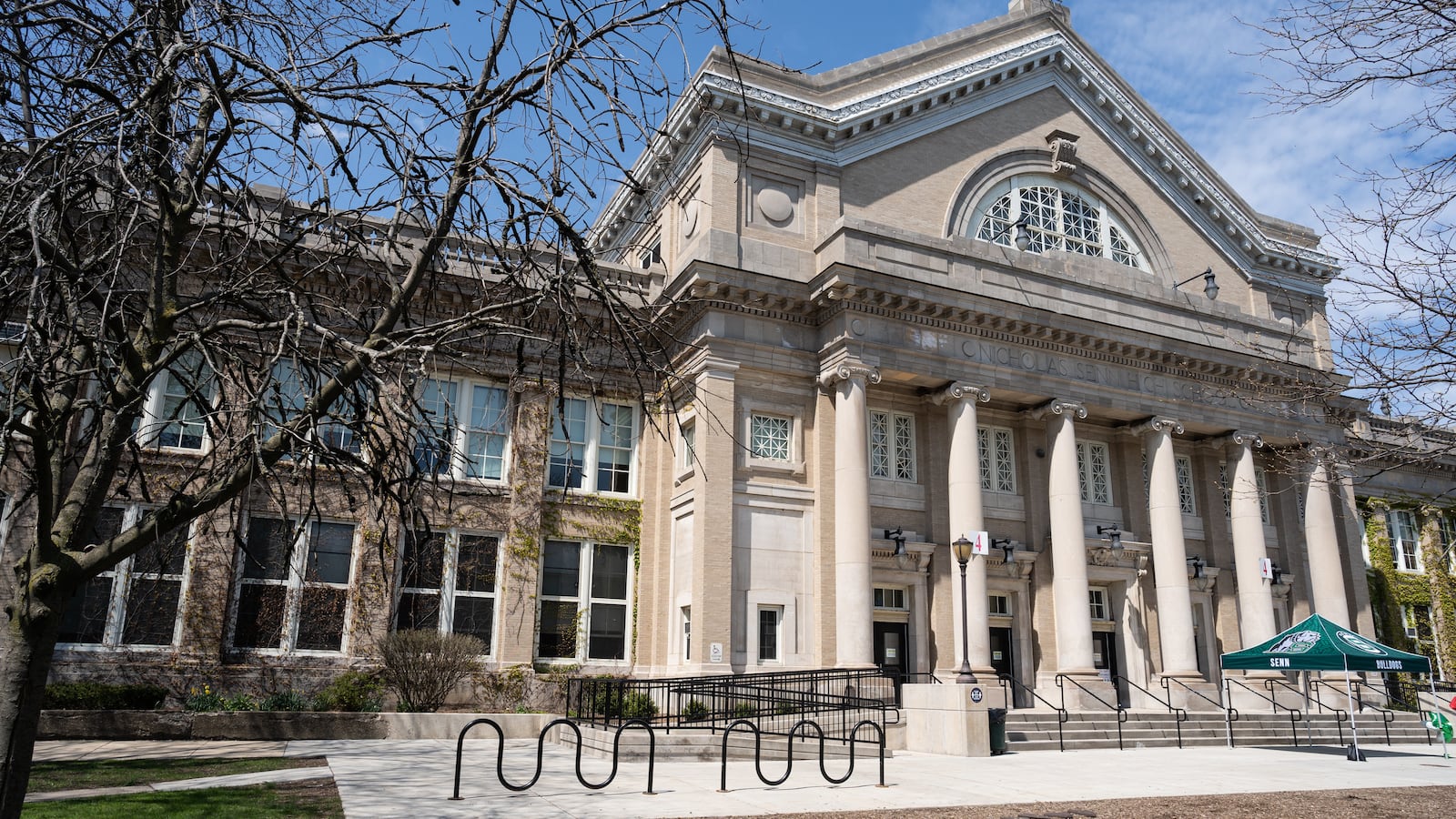With just a couple of weeks left until summer vacation is over, more than 20,000 Chicago teachers are getting ready to welcome students into their classrooms on the first day of school, Aug. 21.
Teachers are stocking up on supplies during back-to-school sales, holding meet-and-greets with students and parents, putting together lesson plans, and decorating their classrooms.
Schools have bounced back since the COVID-19 pandemic shuttered school buildings in 2020, and students learned remotely. Now, mitigation measures have eased, many school-age children have received vaccinations, and schools are fully functioning.
This year, there’s a new normal for schools and teachers. Schools are about to face a financial cliff as emergency federal relief funds will dry up in 2024. And some educators have cited that more students are coming to schools with mental health concerns and behavioral issues.
Five Chicago teachers spoke to Chalkbeat Chicago about their preparations for the first day and what they expect this year. Overall, they say they are excited and are looking forward to what this school year will bring.
Responses have been lightly edited for length and clarity.
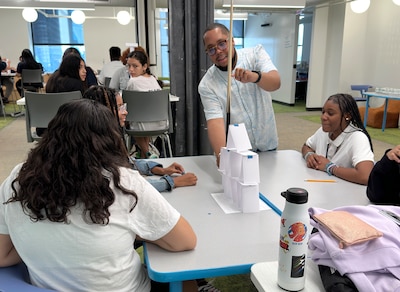
Cornelius Bellamy
Intrinsic Schools Downtown Campus
Favorite school item: Flair pens
Bellamy will be teaching ninth grade students, guiding them through their transition to high school, and introducing them to college and career aspirations. Bellamy says that he is one of those teachers who gets really excited when stores bring out their back-to-school supplies so he can catch a deal on Paper Mate Flair pens, “I always keep a Flair pen in my pocket. They’re a must-have for teachers.”
What are some activities you are planning to do during the first week of school to get to know your students?
My favorite activity to do during the first week of school is called “missionaries and cannibals.” There are three missionaries and three cannibals. The objective is to get both groups of people from one island to the other without the cannibals eating the missionaries. It’s a very challenging game and it requires a lot of problem-solving, but it helps to build grit and perseverance. As a teacher, it helps me to see how students will react when a problem is too hard to solve. Some students are able to solve the problem while others give up. Those who give up give me a challenge to figure out why they gave up? What support do they need? What can I do when they give up in class? How can I help them persevere throughout the school year and the next four years of high school?
This school year, you’ll be a mentor to new teachers on campus. What has been a lesson you’ve taken from your mentors?
I’m lucky to have a strong support system at my school and through Golden Apple — an organization that supports future and current educators in Illinois. My mentors at Intrinsic and Golden Apple taught me to be kind to myself. I think as somebody who is very critical of myself, it was challenging to accept that there was a mistake in a lesson, but that I did well overall. Highlighting your successes is super-important, rather than focusing on what went wrong and what needs to change because that’s a part of teaching. You’re learning and growing just like your students.
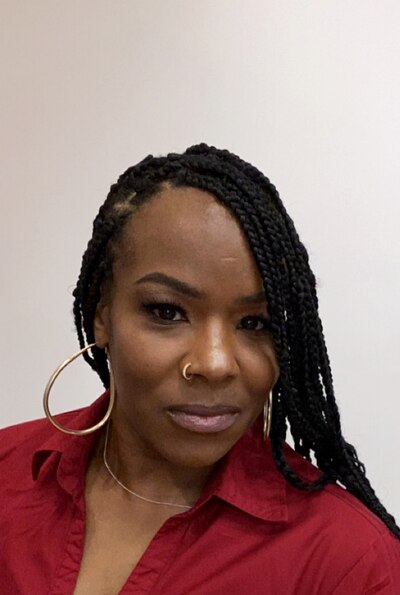
Charese Munoz
Spencer Technology Academy
Favorite school item: Colored pens
This school year will be a new beginning for Munoz. She will be teaching at a new school, a different grade level, and a different subject. Munoz will be teaching English language arts to seventh and eighth grades at Spencer. Previously, Munoz worked for eight years at Stagg Elementary School, where she taught fifth grade math and English to middle school students. She said that she is looking forward to a new start. “Change is good.”
Munoz plans to focus on her students’ social-emotional health this school year. Munoz will be working with students who have experienced the trauma of the pandemic and who are growing up in Englewood — a neighborhood on the city’s South Side impacted by gun violence. She said, “Our students are surviving through trauma; whether it’s trauma within their house, within their families, or trauma within the community.”
You received professional development on social-emotional learning over the summer. How do you plan to implement what you’ve learned this school year?
Getting students to advocate and provide justice. I want them to question what is justice and accountability. I want my students to come up with a system that’s going to work for our middle school classroom. Usually teachers say, “these are the rules.” I know I’m not doing that. This is our classroom. What are the rules? You’re going to tell me what we’re going to implement.
What do you want students and parents to know about you this year?
I am not going to follow the traditional classroom expectations with my students. Some of the traditions in classrooms I question. Times have changed, people have changed, and behaviors have changed. I feel like we’re still using archaic methods in our school system. I’m not trying to make students rebel, but I want them to question why these practices are in place. I want my students to question the status quo and leadership. I feel that when you start with that type of mindset, you will see progress within yourself and your environment.
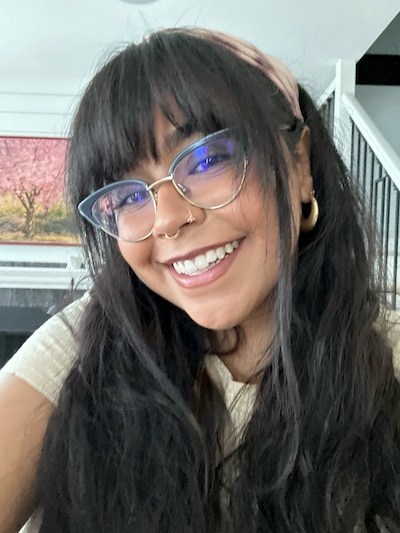
Grace Negron
Helen C. Peirce Elementary School of International Studies
Favorite school item: Expo dry erase markers
Negron is an English language arts teacher. This school year will be her first year teaching eighth graders; last year, she worked with sixth grade students.
Negron said her favorite first day-of-school memory was last year during her first year of teaching when she saw the excitement on her students’ faces when they entered her classroom for the first time. “I really loved when students asked questions that day about the space, including why I have a record player or commenting on the various pieces of art in the room. It showed their curiosity and foreshadowed their own involvement and comfortability they had in my class.”
Adding a record player and decorating your classroom with art seems like you want to create a welcoming environment for your students. Why is that important to you?
I think it’s one of those underrated things that you go through during a teacher preparation program. But, I found it to be one of the most impactful elements in my classroom because I was making a space that students felt cozy, comfortable, and respected in, and that starts with how you decorate the space.
This school year, you will be teaching eighth graders instead of sixth graders. What do you expect to be different this school year?
In my first year of teaching, I worked with sixth graders. That was interesting because it is their first transition from elementary school into middle school. I had to deal with a lot of drama — very petty drama. So, I hope that my eighth graders will come more mature with how they operate their relationships and in the classroom.
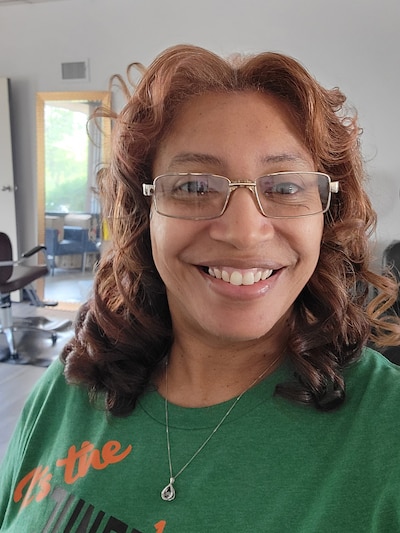
Janelle Brown
George W. Tilton Elementary
Favorite school item: Pencils and erasers
Brown is a special education teacher at Tilton Elementary. Unlike most teachers, she does not know what grade level she’ll be teaching this year because she finds out which students she’ll work with in the first two weeks of school. In previous years, she’s worked with students between third and seventh grades. She plans to arrange the chairs and desks in her classroom a week before school starts. With the back-to-school sales, she gets excited to get a box of 12 pencils for 10 cents at Walmart.
How do you plan lesson plans for students with Individualized Education Programs (IEPs) throughout the school year?
In the first week of school, special education teachers are placed into regular education classrooms all week. Once I figure out who the students are, I go look at their IEPs and decide from there next steps. It’s not difficult, but it’s not like having a second grade class and knowing what the curriculum is going to be, so you can plan ahead.
What is one thing that you want students and parents to know about you?
I want them to know that my main concern for their child in my classroom is that they get what they came for. School is for learning. I want to give them what they need to be successful moving forward. The biggest problem is the students are not on grade level. So, I’m trying to cram everything I can into them in this one year. You know, I’m trying not to make it overwhelming, but it is because they are behind.
Mark Franklin
Burnside Scholastic Academy
Favorite school item: Whistle
Franklin has been a teacher for the past 30 years. Now, he is a physical education teacher who works with students from kindergarten to eighth grade. When he was younger, Franklin was involved in football, wrestling, and track. While he teaches the students how to play all sports, he said that he favors football. Franklin said that he is excited to get the new school year started because he’ll get a chance to see returning students and hear about their summer vacations.
As a physical education teacher, what kind of activities do you have planned this year?
The first activity is a fitness assessment which consists of cardio, pushups, sit-ups, and a flexibility test. Then, we’ll move into sports. Most elementary students start off with soccer, flag football, basketball, track and field. So, I take them through those units to get them familiar with fundamentals.
What are your hopes and fears for this school year?
My hope is that we get more parental involvement. I would like to see more parents involved in parent-teacher night at school as well as more parents involved in decision-making within the local school council meetings throughout the school year.
Samantha Smylie is the state education reporter for Chalkbeat Chicago, covering school districts across the state, legislation, special education, and the state board of education. Contact Samantha at ssmylie@chalkbeat.org.


